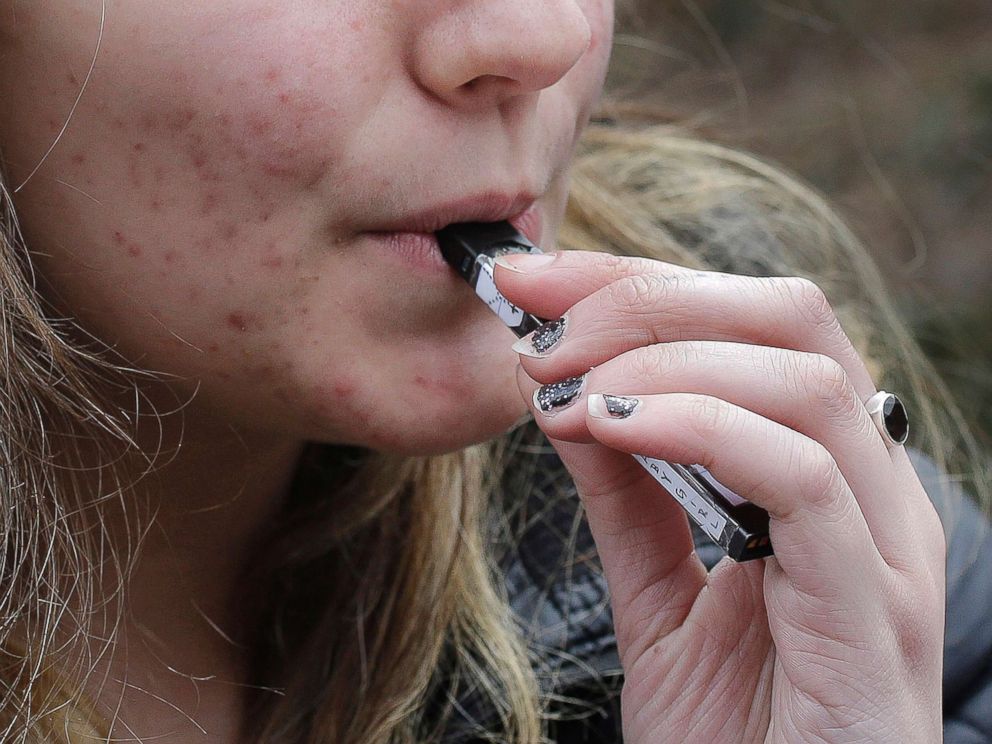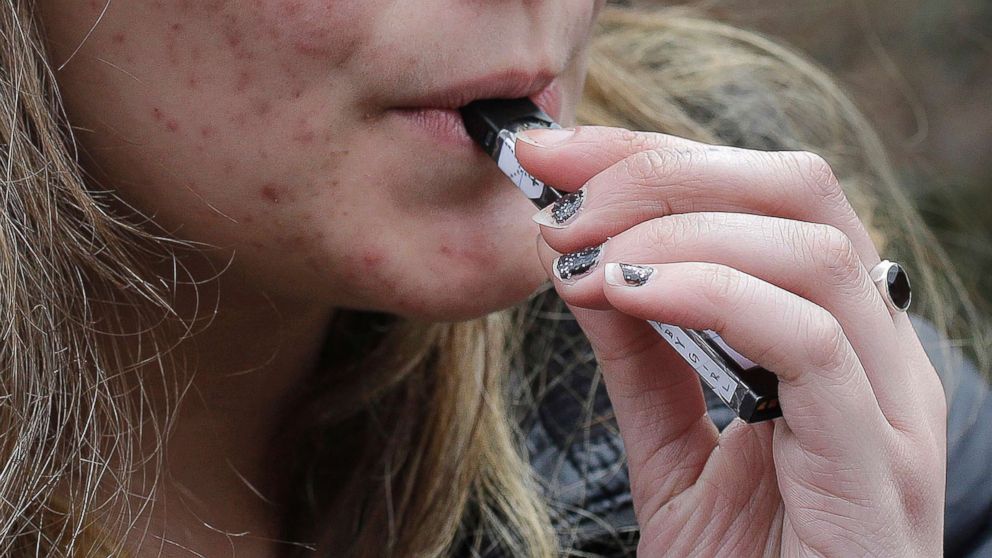Tobacco use falls among high school students, but is rising among middle schoolers: Study
Tobacco use has decreased among U.S. high school students, primarily with a drop in the use of e-cigarettes, but is on the rise among middle schoolers, according to a new federal report.
The study, published Thursday by the Centers for Disease Control and Prevention and the U.S. Food and Drug Administration, analyzed data from the web-based 2023 National Youth Tobacco Survey.
During the survey, adolescents were asked if they had used any tobacco product in the last 30 days.
Data showed that 12.6% of high schoolers -- grades 9 to 12 -- in 2023 reported being current users, a decline from 16.5% last year. This was mostly driven by a drop in e-cigarette use from 14.1% to 10% over the course of a year.
Declines in the use of other tobacco products, including cigars and cigarettes, were also seen among high school students.
However, among middle school students -- in grades 6 to 8 -- there was an increase with 6.6% in 2023 saying they currently used at least one tobacco product, up from 4.5% in 2022.

Additionally, there was an increase among middle schoolers who said they used multiple products, from 1.5% to 2.5%, over the same period.
Freeman Holbrook, principal at Robert McQueen High School in Reno, Nevada, said tobacco products have been a big problem at his school and he said he's starting to see it affect students in neighboring middle schools.
"Every day, I think right now we're actually up to five students that we've already taken vapes off of this morning and so it's a huge addiction," he told ABC News.
Federal officials said they were encouraged by many of the report's findings, but more work needs to be done to drive down tobacco use even further.
"The decline in e-cigarette use among high school students shows great progress, but our work is far from over," said Dr. Deirdre Lawrence Kittner, director of the CDC's office on smoking and health, in a press release. "Findings from this report underscore the threat that commercial tobacco product use poses to the health of our nation's youth. It is imperative that we prevent youth from starting to use tobacco and help those who use tobacco to quit."
For the tenth year in a row, e-cigarettes remained the most used tobacco product among pre-teens and teenagers. Rounding out the top five most used products were cigarettes, cigars, nicotine pouches and smokeless tobacco, respectively.
For both middle and high school students who had ever used e-cigarettes, 46.7% reported being current users and 25.2% said they used e-cigarettes daily.
Among students who reported being current e-cigarette users, 89.4% said they used flavored products with fruit and candy being the most common flavors. Elf Bar was the most reported brand followed by Esco Bars, Vuse, JUUL and Mr. Fog.
"The image is like you're eating a piece of candy," Holbrook said. "In the building, as you walk through a high school, you're gonna smell things like cotton candy and gummy bear and lemon and blueberry snd all these kinds of candy related items that the kids seem to love."
"Given the number of middle and high school students that use tobacco products, sustained efforts to prevent initiation of tobacco product use among young persons and strategies to help young tobacco users quit are critical to reducing U.S. youth tobacco product use," the authors wrote in the report.
According to the CDC and FDA, using tobacco products before adulthood increases the risk of lifelong nicotine addiction and another negative health impacts.
Nicotine exposure from e-cigarettes can hinder brain development in adolescents and young adults, which can continue into the mid-20s, the CDC says.

Additionally, e-cigarettes can contain heavy metals and cancer-causing chemicals that can damage the lungs and lead to disease, disability and even death, according to the CDC.
The authors of the report said multiple factors have led to the increase in tobacco use among adolescents including companies introducing flavors and playing down the harms.
To continue reducing youth tobacco use, the CDC and FDA recommend proven policies including "price increases, smoke-free policies, counter-marketing campaigns, and healthcare interventions."
Holbrook said his school have held assemblies and conferences for students and their families about the ill effects of vaping and hopes that other schools are doing the same and teaching about the harmful effects as early as elementary school.




